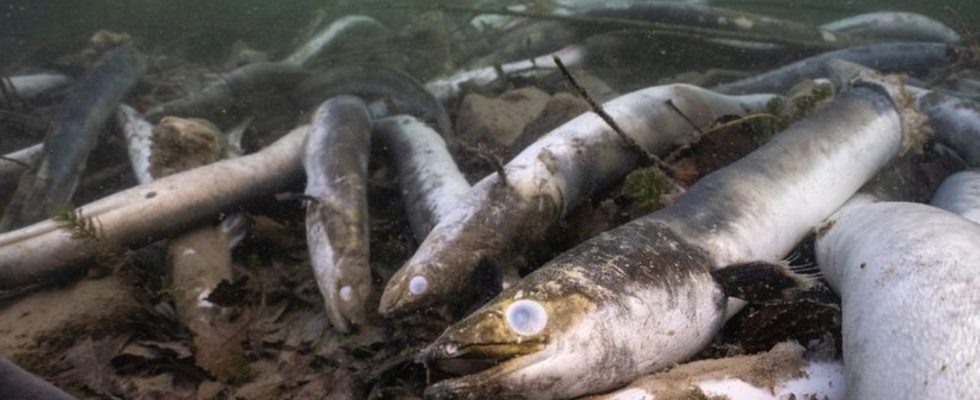Animals
Fishermen denounce “eel slaughter” at the Hochrhein power plant
The Swiss Fisheries Association (SFV) denounces animal suffering in the High Rhine with horrifying images of mutilated and dead eels. photo
© Jonas Steiner/Swiss Fisheries Association/dpa
Thousands of dead eels float in the High Rhine every winter, mutilated by the power plant turbines. Swiss fishermen are insisting on urgent action. And criticize the eel fishery in Lake Constance.
With frightening images of mutilated and dead eels, the Swiss Fisheries Association (SFV) denounces the suffering of animals High Rhine. It’s about eels that are injured in the turbines of the Schaffhausen power plant. The association speaks of a “torturous eel slaughter”. The eels are lying in pieces in the water, with broken spines, says SFV managing director David Bittner to the German Press Agency. “Some of them don’t show their injuries, but they’re writhing and dying miserably.”
The association, the umbrella organization of Swiss fishermen, has been calling for measures for many years. He also wants no more young eels to be released into Lake Constance on the German side. It has nothing to do with species protection, says Bittner. They would only be suspended for economic reasons, particularly for professional fishermen. Eel fishing has been banned in Switzerland since the end of 2020. Eels there are classified as endangered. “A ban on eel fishing would be a sensible step,” says Bittner. “But for the eel, this is not the measure that saves it at all. The turbines are killing it.”
Hundreds of dead eels can be seen these days on the bank near Rüdlingen opposite the mouth of the Thur, “but that’s just the tip of the iceberg,” says Bittner. Many floated unseen on the bottom. Tens of thousands of eels could die between November and February.
In the winter months, eels migrate towards the mouth of the Rhine and on to the Sargasso Sea off the coast of the US state of Florida. There the animals reproduce once in their lives between the ages of 15 and 20. The small eels then migrate back.
On the German side, eels are released into Lake Constance. Of those who want to migrate to the Sargasso Sea and are not caught, more than 90 percent died during the first turbine passage, says Bittner. There are numerous other power plants behind it. Virtually no eel survives to the mouth of the Rhine. The association complains that nothing is being done for the eels.
Marco Nart, spokesman for the Schaffhausen power plant, says that there are still no practical solutions for the fish descent towards the mouth. According to the Water Protection Act, “ecological impairments, such as fish migration,” would only have to be eliminated by 2030.
The fishing association is demanding long-term fish-friendly turbines that can protect not only small fish, but also eels up to one meter long. Another option is to catch eels in front of the first power plant and release them hundreds of kilometers further behind the last Rhine power plant before the mouth.
Nart names three solutions that the hydropower industry is working on: an “eel taxi”, as he says, i.e. fishing in front of the turbines and releasing them behind the power plants, temporarily restricting power plant operation during eel migrations or a physical obstacle that the eels around the power plant.

